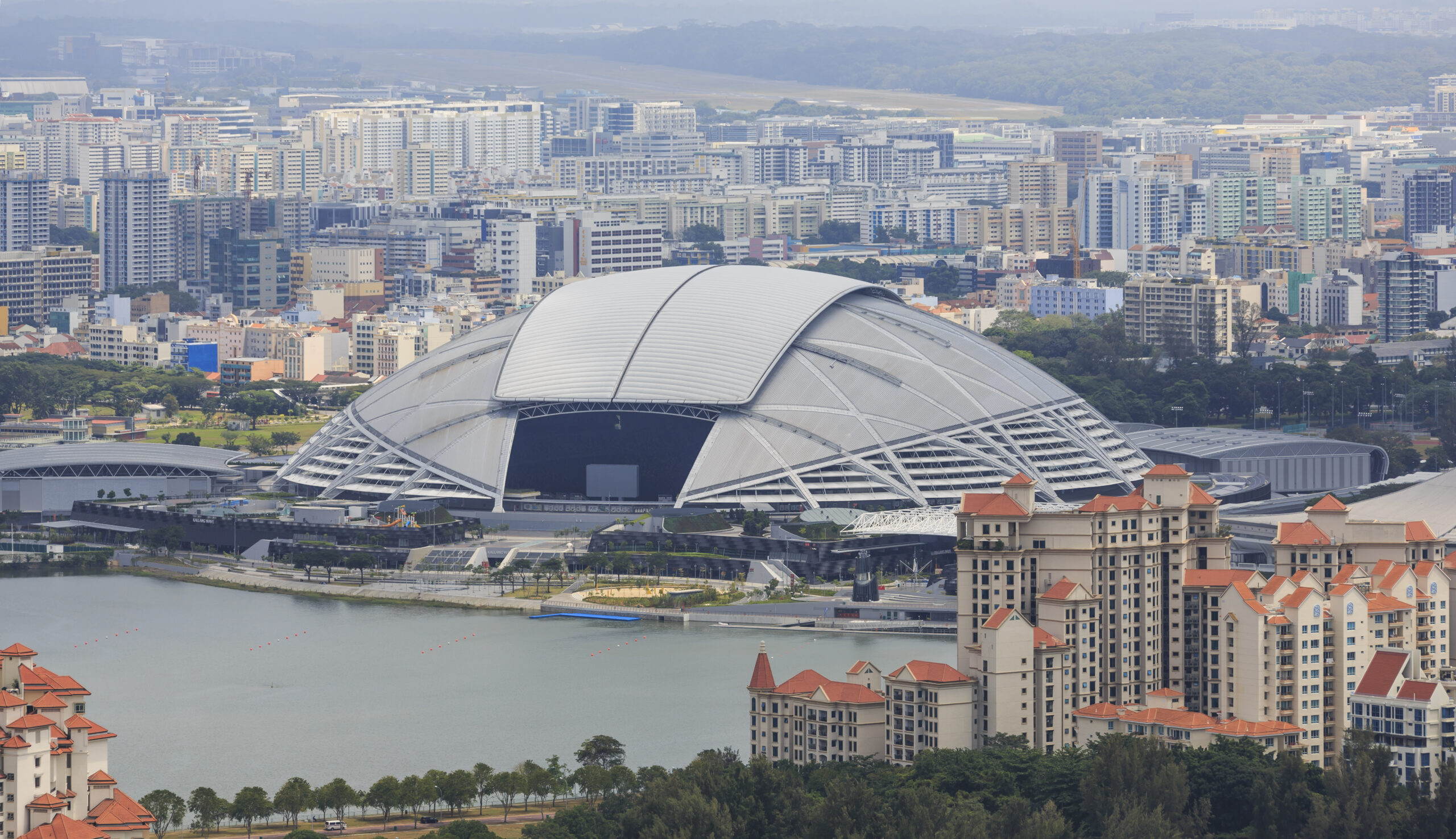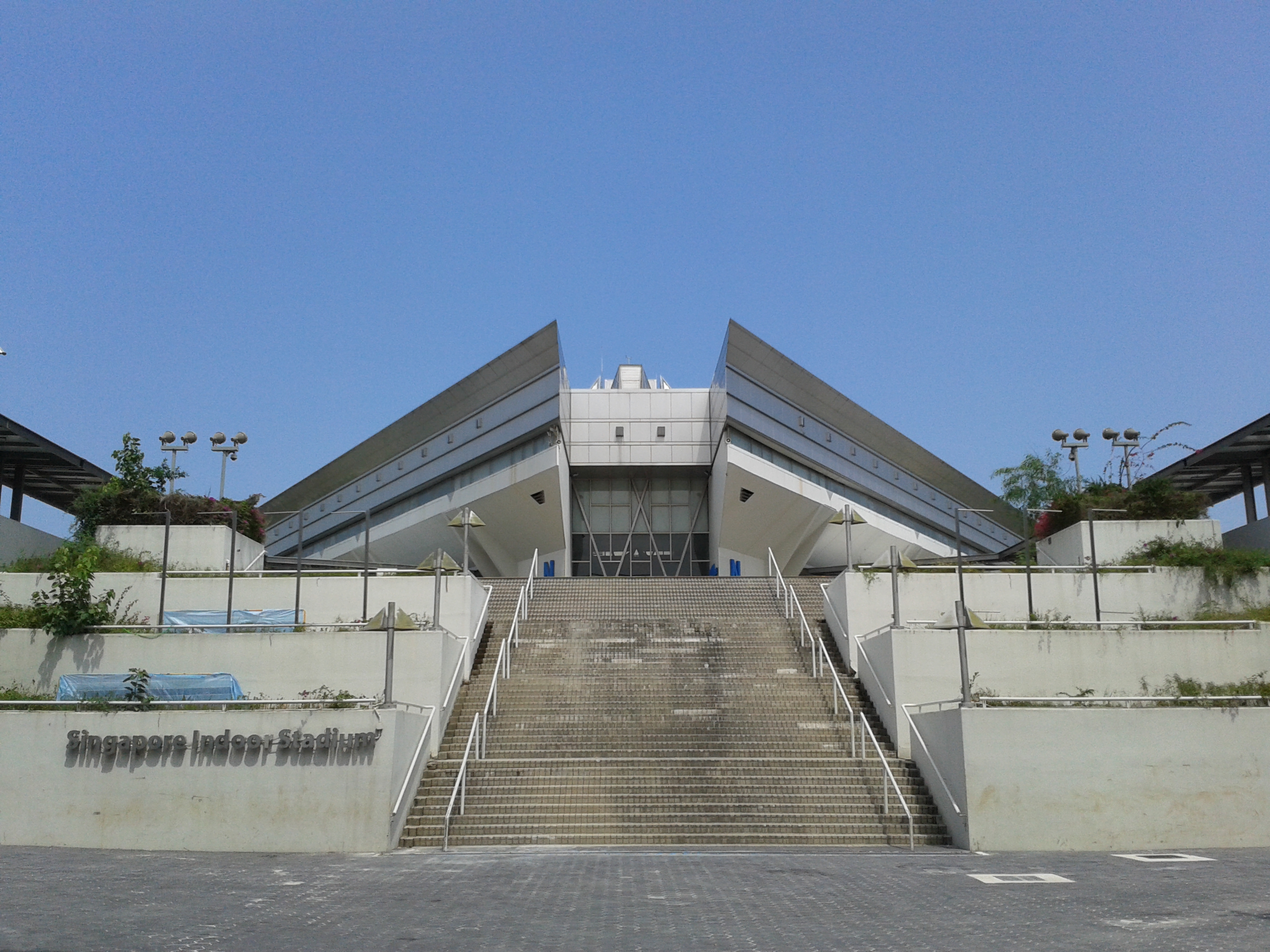The budget debates have brought us all sorts of news — from new hospitals to the opening of the new Thomson-East Coast Line stations.
But that’s not all. We’re also going to have a new “best-in-class” indoor arena to replace the current Singapore Indoor Stadium.
Here’s everything you need to know about the new indoor arena.
Singapore Indoor Stadium to be Replaced by New “Best-in-Class” Indoor Arena
On Thursday (7 March), the Minister for Culture, Community and Youth Edwin Tong unveiled the Ministry of Culture, Community and Youth (MCCY)’s plans to replace the Singapore Indoor Stadium with a new “best-in-class” indoor arena.
No, we’re not replacing the national stadium with Taylor Swift’s sweat — that’s the Singapore National Stadium. We’re replacing the Singapore Indoor Stadium.
For all of you suakus out there, this is the Singapore National Stadium, which was opened in 2014 after the former National Stadium was demolished:

And this is the Singapore Indoor Stadium, which was built in 1987 and opened in 1989:

Together, the Singapore National Stadium and Singapore Indoor Stadium form the Singapore Sports Hub. The stadium that’s being replaced is the latter — the older 12,000-seater Singapore Indoor Stadium.

The three-decade-old Singapore Indoor Stadium is being replaced by a new indoor arena as part of the Kallang Alive project — which aims to make an integrated ecosystem out of the Singapore Sports Hub and broader Kallang precinct.
Generally, the Kallang Alive project has a broad range of aims. Be it hosting world-class events or providing a test bed and breeding ground for sports innovation, the project has it all accounted for.
The newest addition to this project is the new indoor arena which will be replacing the Singapore Indoor Stadium. We wish we could tell you more about the indoor arena, but as planning for the new indoor arena is still in the early stages, few details have been provided thus far.
Even if you give Minister Edwin Tong a call, it’s unlikely you’ll be able to get any further details about the indoor arena. Details such as the timeline for construction and the fate of the existing indoor stadium will only be released down the line.
For now, what we do know is that the new indoor arena will be “among the best in class globally” and “future-proofed”.
And since the new indoor arena will be built adjacent to the current site of the Singapore Indoor Stadium, there’s good news — the stadium will continue to operate until the new indoor arena is constructed. This means all events lined up to be hosted at the Singapore Indoor Stadium will continue to move forward; your concerts and whatnot won’t be affected for now.
Except maybe… once construction for the new indoor arena commences, your “Cat 100” seats outside the Singapore Indoor Stadium may be taken up by the construction site.
The rationale behind MCCY’s decision to construct a new indoor arena is simple: competitiveness.
As Minister Edwin Tong said: “The hosting of high-quality international events is valuable, and also highly sought after. Our competitors are not standing still and we, likewise, must continue to innovate and evolve if we want to continue to attract top-tier events.”
The Singapore Indoor Stadium’s Legacy
The move by MCCY to replace the Singapore Indoor Stadium with a new indoor arena is a bold one. After all, the Singapore Indoor Stadium is quite the icon.
The stadium was designed by Kenzo Tange, who if you didn’t already know, is an internationally acclaimed Japanese architect.
In other words, he can be considered the Taylor Swift of the architecture world lah.
The $90 million indoor stadium was opened in December 1989 by then-Prime Minister Lee Kuan Yew and has since hosted all sorts of iconic events. From the inaugural Youth Olympic Games in 2010, to Jackey Cheung’s 11 shows in 2023, you name it, the Singapore Indoor Stadium probably hosted it.
The stadium is also iconic for historical reasons. It was the venue for the SilkAir Flight 185 air crash memorial service in 1997.
But that’s far from all that the Singapore Indoor Stadium brought to the table. The stadium even brought jobs to the table.
When plans for the stadium to be built were drawn up and finally announced in 1985, Singapore was stuck in a slump; a post-independence recession, to be specific.
The construction of the Singapore Indoor Stadium created jobs in the building industry at a time when Singapore needed it most. After all, it was a $90 million project — you can only imagine the scale of the project and the number of jobs it consequently created.
Sentiments on the Replacement of the Singapore Indoor Stadium
Owing to the deep history that has been witnessed throughout the years by the Singapore Indoor Stadium, many Singaporeans are incredibly fond of the site.
However, in the true Singaporean spirit of always moving forward, many have welcomed the idea of the new indoor arena announced by MCCY as well.
“This presents an opportunity to enhance our facilities… The inclusion of the latest technology in the new arena can significantly improve the overall fan experience, especially considering that the current stadium was not purpose-built to host international sporting events,” Alan Ow, the chief executive of the Singapore Badminton Associate, said.
This sentiment was shared by Leon Neo, the chief executive of the Basketball Association of Singapore.
“We are very excited about this news, and we think that this is a right move by the Government to recognise that we do not have many options for indoor competition venues in Singapore to host high-level competitions. It is encouraging that the Government is progressively addressing (this),” Neo said.
The “Kallang Alive” Project: What to Look Forward To
The new indoor arena is far from the only project the government has in mind to develop the Kallang precinct.
This year, under the Kallang Alive project, the Kallang precinct will also welcome two new facilities — the Kallang Tennis Hub and Football Hub.
New basketball courts will also open at the former Bedok Swimming Complex.
Wow. Perhaps the East side really is the best side.
And in case the West side feels left out, there will also be a new softball facility opening at Jurong East this year.
No more taking sides lah. Wherever you are in Singapore, thanks to the astute planning of the authorities, it’s a good place to be.




